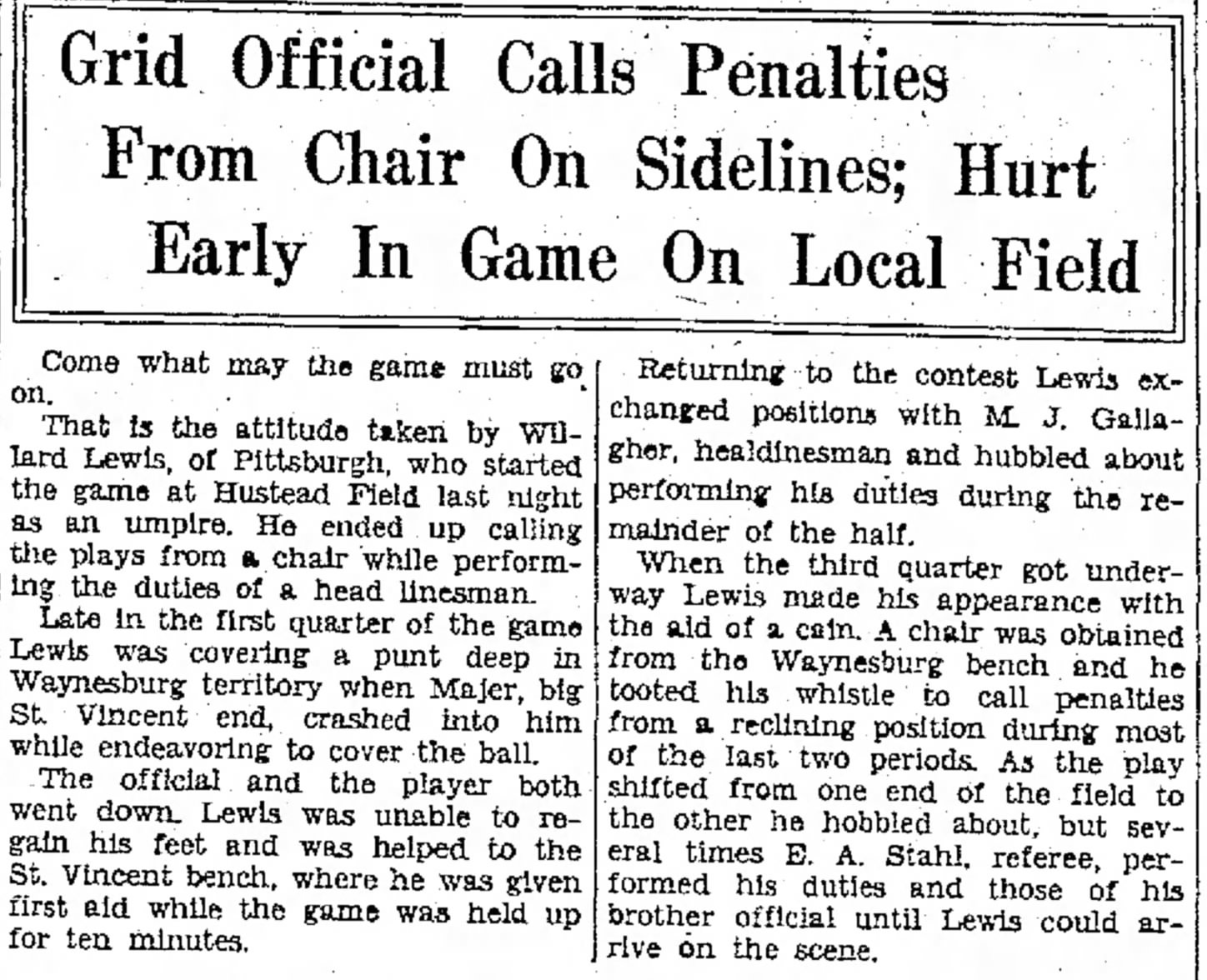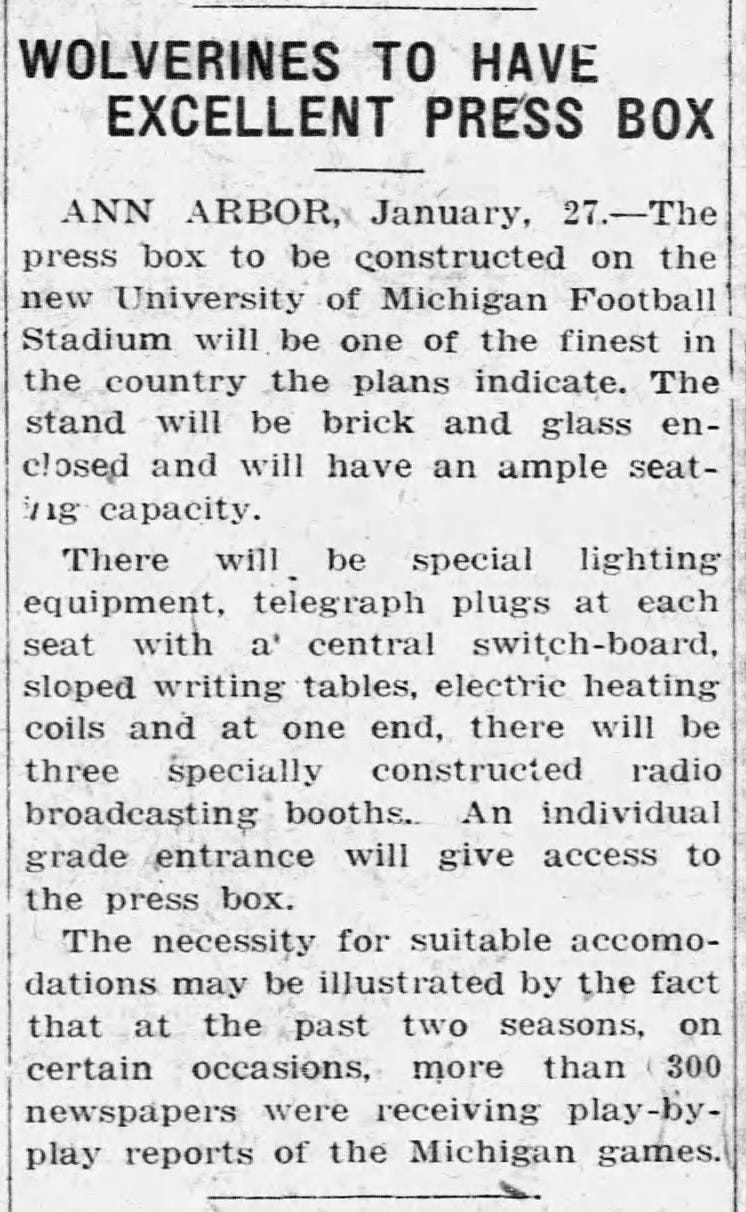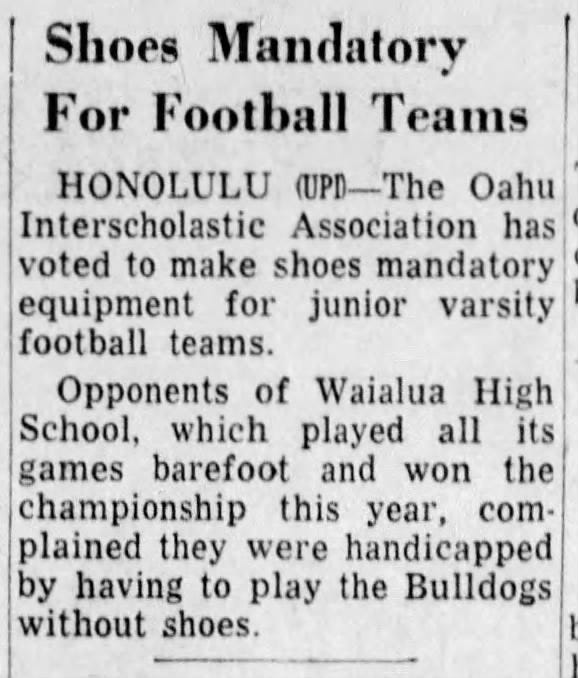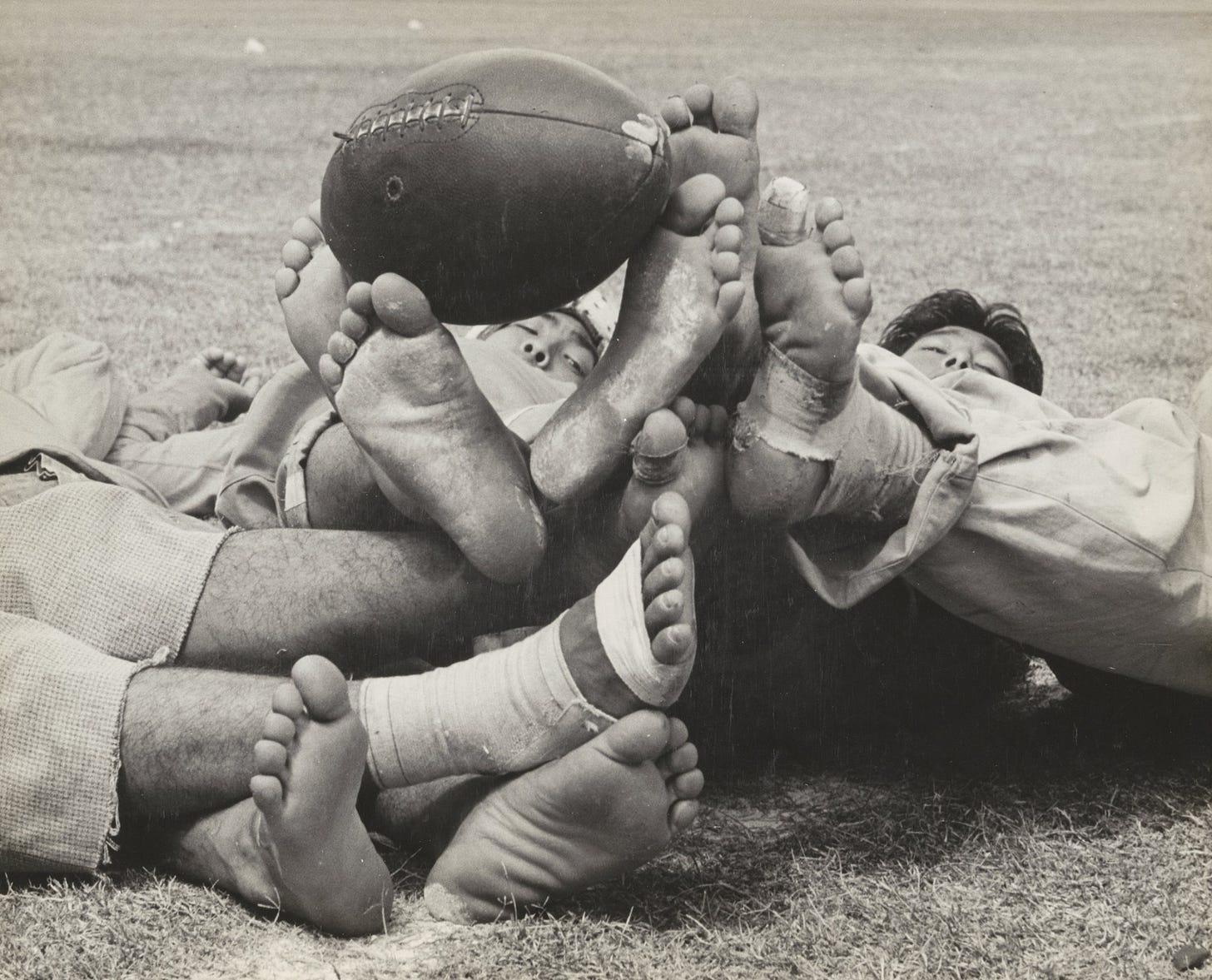Today's Tidbit... Factoid Feast II
As discussed in the Factoid Feast I, my searches through football history sometimes lead me to topics too important to ignore but too minor to Tidbit. Such nuggets are factoids, three of which I am sharing with you today.
Technology at the Big House
One of last week’s Tidbits covered The History of Signal Stealing in College Football. While I did not accuse any current program of such misbehavior, it reminded me of a Daily Illini article describing the use of state-of-the-art technology when Michigan Stadium opened in 1927. Illinois’ Memorial Stadium opened in 1923, too late for its press box design to include radio booths. But by waiting a few years, Michigan Stadium’s press box included three dedicated radio booths. Besides that, every desk had a telegraph plug connected to a central switchboard so the reporters could update their newspapers on the day’s events. Now, that was some fancy technology.
The Official Chairman
Speaking of technology, one of last month’s Tidbits covered The First Televised Football Game, which came live from New York, a Saturday afternoon game between Fordham and Waynesburg in the 1939 season opener for both teams. Later that season, Waynesburg met St. Vincent, during which the umpire, Willard Lewis, was hit by a St. Vincent player covering a punt. Unable to stand, Lewis was taken to the bench, administered first aid, and then switched roles with the head linesman.
During most of the second half, Lewis used a cane and sat in a chair while performing linesman duties, though the game continued without him when he was too slow to carry out his duties promptly. We salute Willard Lewis almost 90 years later for being a stand-up and sit-down guy.

Hawaii Has Sole
Hawaiian football has a fascinating history. Its isolation before air travel, the limited number of colleges, and the numerous football-playing military personnel resulted in a brand of football unlike any other state’s. (I’ll cover college teams traveling to Hawaii for Christmas holiday games next month.)
One Hawaiian football adaptation came in a barefoot version of the game played by locals, which Hawaiians still play today. Notably, the barefoot style was also the norm for interscholastic play. Finally, in 1961, the rule-makers put their foot down, mandating shoes even for junior varsity football.
Football Archaeology is reader-supported. Click here to buy one of my books or otherwise support the site.





These smorgasbord informational pieces are a cornucopia of gridiron history! The Hawiian barefoot games are a fascinating topic I have never heard of associated with the game other than 1980s kickers.